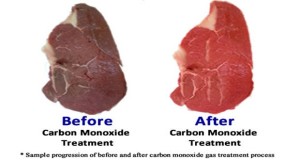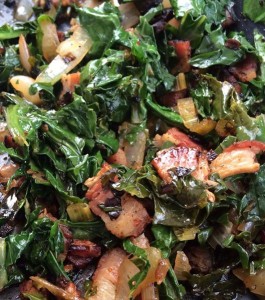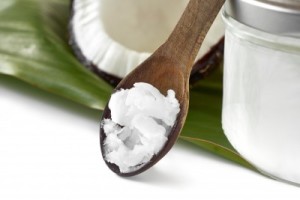There have been many accounts when people have lost hope in FDA, but here’s another one that will crush your reality. Corporate chain groceries have a practice of making decayed meat look fresh just so that consumers would buy it. It’s a practice that was banned in Japan and Europe.
These corporations hide the fact that over two thirds of all the chicken and beef sold in Canada and the US is toxic because it is treated with FDA approved carbon monoxide gas. The FDA is aware of the risks thereof, but still won’t do anything.
The Congress was going to make groceries label their meat that was treatedwith carbon monoxide by enacting a bill about it, but obviously the corporate lobby groups were stronger. The bill was introduced in 2007 by the name H.R. 3115, but it never saw the light.
The carbon monoxide gas helps in making meat look fresh even when it is rancid and infested with bacteria such as E-coli, Campylobacter, and even Salmonella. The gas reacts with the meat’s pigment and makes it look bright red as if fresh. Even the rancid smell is eliminated so there is no knowing if the meat is any good.
The irony behind this is that the FDA has warned against reduced oxygen packaging because that way the bacteria is inhibited, thus the signs by which people can tell if the meat is decaying are eliminated.
Even if you try and cook a meat that was swarmed with the above mentioned bacteria and made look fresh with carbon monoxide gas won’t help, because some of the gas toxins cannot be eliminated.
Another illegal move by the FDA is the acceptance of the Generally Regarded As Safe (GRAS) notifications. By accepting them it ignores existing regulations and Federal statutes, because by letting corporations use carbon monoxide it helps them deceive consumers. Even though the FDA has evaluated this issue on several occasions it still claims that carbon monoxide is GRAS.
Many European countries have banned this practice because of safety concerns. For example, the Scientific Committee on Food of the European Commission concluded that not only the carbon monoxide masks the spoilage, but that it is toxic because it sticks to hemoglobin and takes the place of the oxygen that this molecule carries in the bloodstream, thus causing disorder in the body. The more the body is exposed to carbon monoxide, the more the risk for death occurs due to CO poisoning.
My recommendations: Shop your local farmers markets. Create relationships with local farmers. Look for meat that’s been raised responsibly, grass fed and organic. You might even look into a local CSA. If any of these aren’t an option, check out US Wellness Meats for online delivery.
_____________________________________________________________________________________________
Original Source: http://www.dailynutritionnews.com/rancid-meat-is-sold-everywhere-around-us-and-it-is-approved-by-fda/



